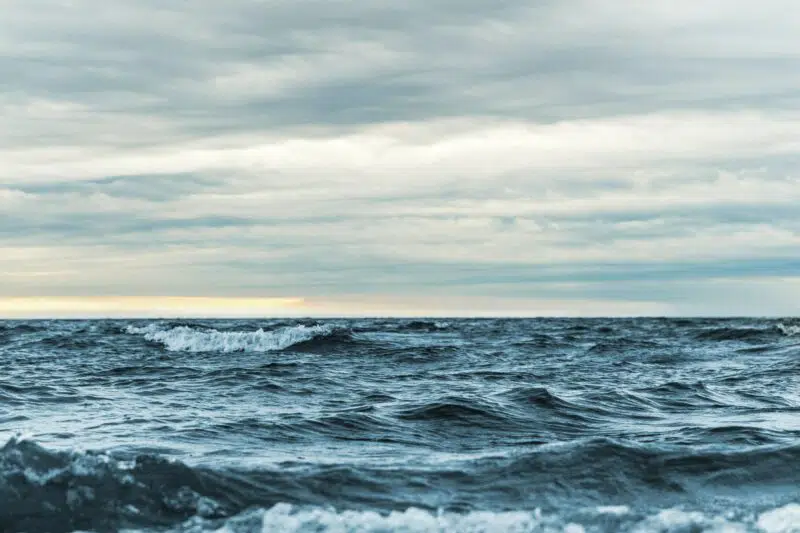Welcome to the Top 10 Dangerous Water Animals.
Talking about dangerous animals in the water, sharks are the first animals that appear in our minds. There are wide species of sharks found in different regions of the world, like tiger, bull, and white sharks, and their attacks are common in water areas.
But the damages these animals cause are severe, considered one of the most severe attacks by other water animals. But many tiny creatures are beautiful in look but can have a dangerous impact when bitten.
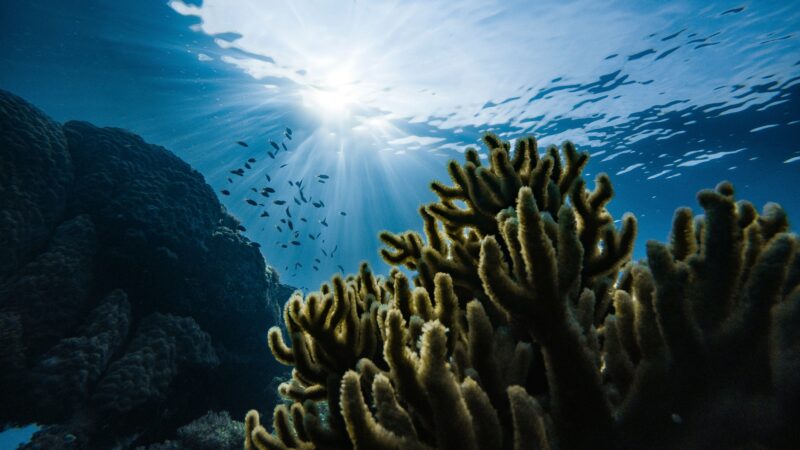
The sea is a planetary superpower. Home to stupendous biological systems and loved natural life, the sea covers 71% of our world’s surface and supports the existence of billions of individuals. It directs our environment, delivers a large portion of the oxygen we inhale, and energizes the water cycle that produces downpours and fresh water.
Click below to jump to any section on the top 10 dangerous water animals:
#1 Box Jellyfish
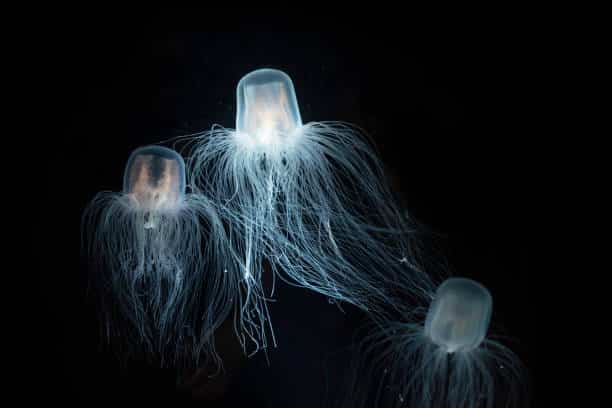
Box jellyfish are various species that get their name from their 3D square-formed bodies. Many crate jams have especially venomous stings with the enormous ocean wasp (Chironex fleckeri) . They have the most remarkable sting of all. Found along the northern shorelines of Australia and tropical South East Asia.
The ocean wasp is generally viewed as the most deadly jellyfish on the planet and has caused more than 60 deaths in Australia alone. In different districts, the loss of life will probably be much higher, especially where an antidote isn’t promptly accessible. No wonder the list of the top 10 dangerous water animals starts with this guy!
The ocean wasp’s toxin is the second most deadly animal on earth, with the geographic ocean cone being more venomous. Gauges recommend that every creature contains sufficient toxin to kill 60 grown-up people, and not many creatures can cause passing so quickly. In outrageous cases, demise via heart failure has been known to happen under five minutes after being stung.
The actual sting causes horrifying torment alongside a consuming sensation compared to being marked with a super-hot iron. The (kind of) uplifting news is that, as opposed to mainstream thinking, peeing on the sting makes no perceptible difference! The limbs often stay joined to the person in question and can keep stinging even after they have left the ocean, frequently prompting scarring.
At the opposite finish of the size scale is the minuscule Irukandji jellyfish. These boundless and minimally comprehended box jellyfish have a potent toxin that can bring about the Irukandji condition, which slowly shows up after the sting.
As well as being possibly deadly, Irukandji is accounted for as being unfathomably excruciating. One casualty said it began as more terrible than labor and got more extraordinary from that point on.
#2 Stingray
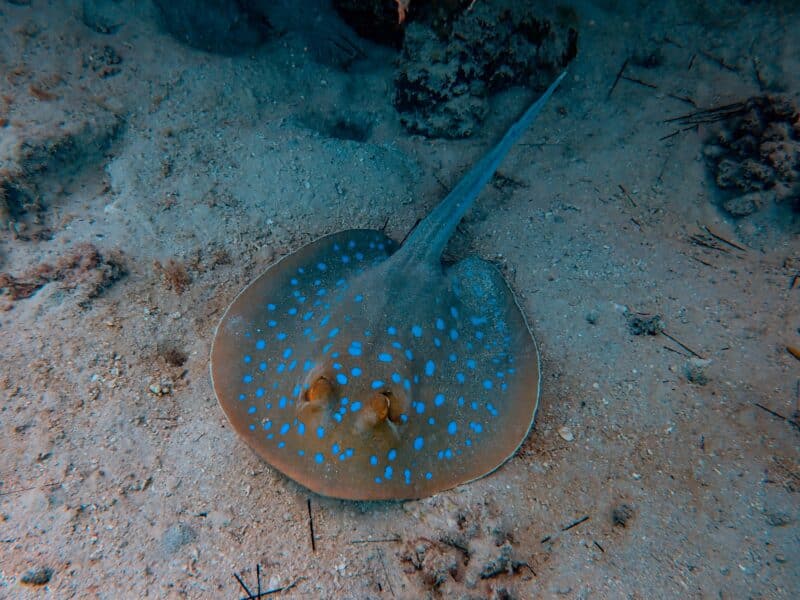
Specialists believe the stingray to be a mild animal those main assaults justifiably, a few generally announced occurrences, including this fish, capture the limelight because of this nature. Numerous nature darlings would recall Steve Irwin, the undeniably famous “Hunter of Crocodiles.” Who died on September 4, 2006, in what specialists found a mishap with Stingray?
Generally, injuries or bites by Stingrays would happen on an individual’s lower legs as these fish like to remain covered in the sand on the sea floor, so it’s normal to put a step on them inadvertently.
Nonetheless, in Steve Irwin’s case, the scared fish blow a gasket off it’s perilous and venomous thorned tail and cut him solidly from the chest to the heart. Stingray, being referred to, was subsequently recognized as a Bull of Australia beams with a swindle that was deliberately up to 8 inches long in length. The toxin in itself is exceptionally agonizing, and it’s not typically dangerous.
Be that as it may, a wound chest, stomach region, or heart that will kill the vast majority at any rate, toxin or not. Only a month and a half after Mr. Irwin’s demise, a person named James Bertakis of 81 years, nearly experienced a similar destiny when a stingray jumped from the water, came into his fishing boat in Florida, and cut him on his chest.
Fortunately, in this case, the man didn’t endeavor to eliminate the spikes from the chest, and this act probably saved him from dying.
This far-fetched case of an injury from a stingray bite looks for clinical consideration rapidly on the grounds as the toxin can damage cells and tissues in the human body.
If untreated for a long time, the impacted appendage might need to be cut away. The precarious know fact regarding stingrays is that they invest a ton of energy to some extent to cover the sea floor. Jumpers need to be mindful that they will not put a step on them. Otherwise, they will bite.
#3 Flower Urchin
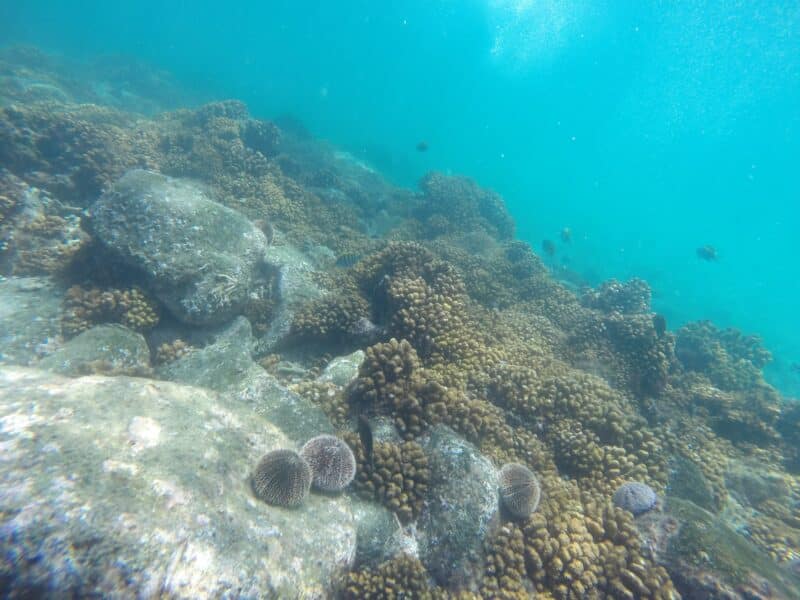
Flower Urchin is a wonderful-looking animal, however, also known as perilous. The long spines on flower urchin creatures are not so much for no particular reason.
Indeed, the Guinness Book of Records depicts them as the world’s most hazardous ocean Flower Urchin. There could be no more excellent method for saying it: the toxin of this imp is intense and lethal.
They cause fits of the smooth muscles, spasms, suffocation, loss of motion, shock, and passing in the human body. So keep an eye out for these beautiful “bloom kind of” structures for Flower Urchin.
When it connects with your uncovered skin, it will create a siphon toxin in the body. The bloom imp is scandalous and liable for various human deaths. Earning itself a spot on the list of top 10 dangerous water animals.
#4 Electric Eel
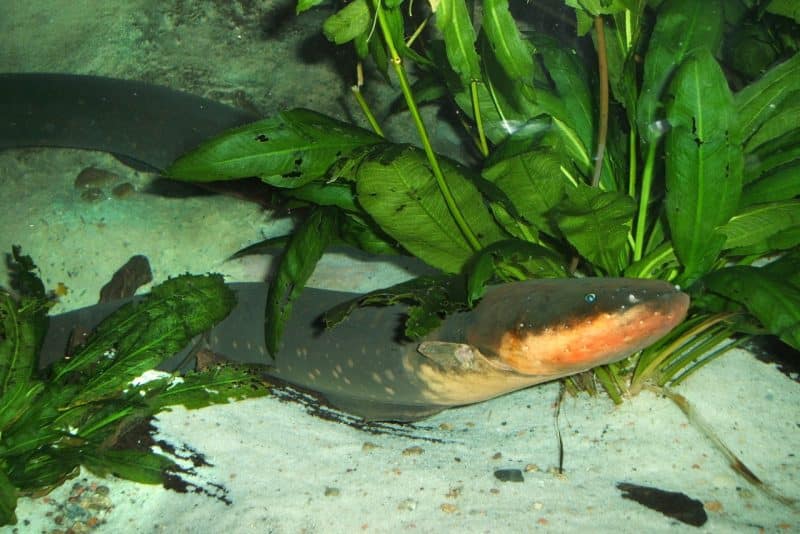
Electric eels are ruthless and can convey a colossal electric release of around 600 volts, which is the most extreme. They create an electric discharge of 600 volts because of the 6000 electrolyte cells present in the body. This much electric discharge can cause a cardiovascular breakdown in an individual. Earning eels a spot on the top 10 dangerous water animals list.
The eating routine of an electric eel is savage, utilizing their shock to go after any prey. Their complete length can be more than 8 feet in length.
They incline toward regions with new and dinky water. However, the rising water levels in waterways in South America can seriously jeopardize them for assault via land well-evolved creatures. However, most fun reality records classify the electric eel with different eels; they are nearer in their hereditary qualities to carp and dupe.
This species is night-time with awful visual perception. The regular territory of the electric eel is solely freshwater regions, even though they incline toward cloudy pools. These environments are effortlessly found in South America. However, they are fundamentally viewed as in the center and lower Amazon and Orinoco waterway bowls.
However, they can live in many water profundities; they arrive at the surface to inhale the air on account of the anoxic waters. Currently, the electric eel isn’t jeopardized, so no preservation endeavors are being made. Local people are urged to avoid them and not catch them to shield the region from invasions.
Aside from being fished by people, electric eels have no known hunters. They are excessively perilous for different species to pursue, paying little mind to water levels. Assuming the water is shallow, quite possibly enormous land warm-blooded animals will pursue them, yet this danger is frequently stopped with a shock. Found in warm and dim waters, this fish has scale-less skin, making it smooth and practically disgusting with a snake-like figure.
Their back and sides highlight dim to developed, which is why they stow away so well in hazier waters. Their midsection is ordinarily yellow to orange. The organs that set off the electric shock – the vitally electrical organ, Tracker’s organ, and the Sachs’ organ – are answerable for delivering 1+ amps. Each assault discharges 1+ amps, which is why there are no predictable hunters.
All things considered, a couple of amps alone are to the point of inciting a seriously agonizing shock. As expected, it scores itself on the top 10 dangerous water animals.
#5 Textile Cone Snail
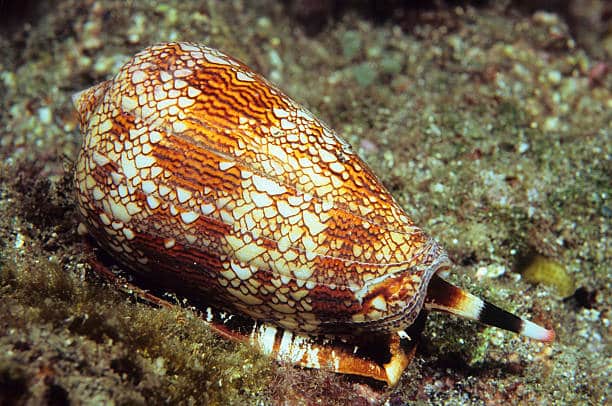
Undoubtedly, this creature is one of the most perilous ocean animals you could experience! It’s generally called the fabric of gold and has a length of 3.5 crawls long. Its appealing shell attracts the person like one for shell authorities.
Yet it’s accepted that even a single drop of its toxin can kill around 20 persons in one go. The textile cone snail has small spears stacked with a lethal neurotoxin. When they feel undermined or any kind of threat, they start shooting their spears toward each path to protect themselves from danger.
The thorns can penetrate uncovered skin. However, those from more significantly developed grown-ups could puncture a suit. Other types of cone snails are hazardous, and it’s known as the cigarette snail around the region where it is found.
They are named cigarette snail as the one who has their venom has this much time before death.
#6 Barracuda
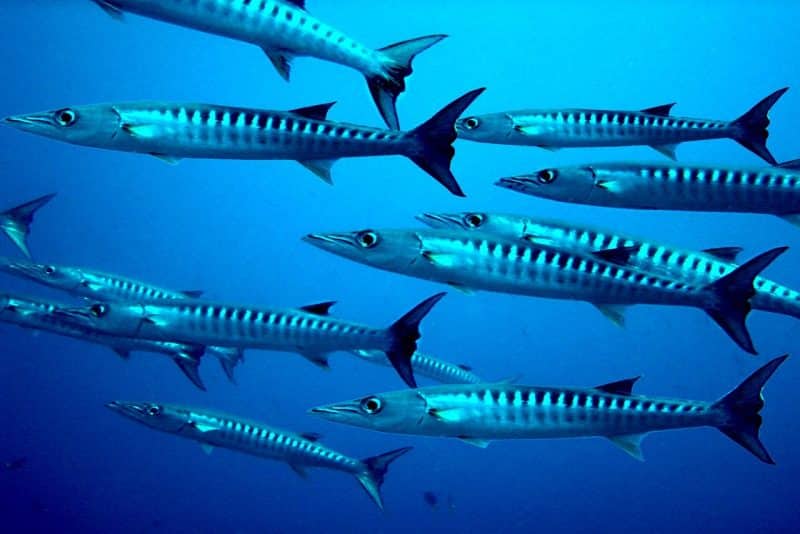
There are numerous types of Barracuda fish; however, the Great Barracuda (Sphyraena Barracuda) is known as one of the most important of the other fishes. Barracuda fish is quick, forceful, torpedo-formed, and can be 1.8 meters long in length.
We should likewise not neglect its variety of very sharp, terrifying teeth. Indeed, a dead barracuda fish is perilous as its tissue can have ciguatera poison in it, which can be dangerous. As expected, the Barracuda earns itself a spot on the top 10 dangerous water animals.
This category of Barracuda fish is also known as a striker for people, however, particularly individuals jumping while at the same time wearing sparkly items. Their nibble causes genuine harm and blood misfortune. Besides, there are a few cases of Barracuda fish jumping such that they came out of the water to go after individuals in boats.
#8 Blue Ringed Octopus
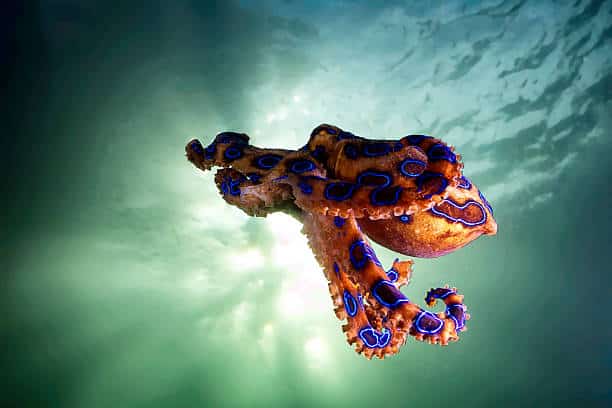
They are majorly found in the Pacific and Indian Ocean regions. Indeed, these are little in length like around 5 – 8 inches in length; however, it conveys sufficient toxin that can kill 26 grown-ups in sometime like few minutes. The major genuine risk with barracuda is their nibbles are regularly effortless, so casualties don’t understand that someone has bitten them.
When they start to show side effects like respiratory melancholy and loss of motion, they’ll realize something is off-base. It is taken into account that no antidote has been made so far for this octopus venom, so it’s undoubtedly quite possibly the riskiest ocean animal in earth’s water.
Different side effects of its nibble incorporate queasiness, cardiovascular breakdown, loss of motion, and visual deficiency; casualties can kick the bucket in minutes. Luckily, this animal isn’t forceful and will generally escape from people.
Likewise, the circles on their body begin to change variety once the creature feels undermined so that fills in as an advance notice to ease off.
#8 Lionfish
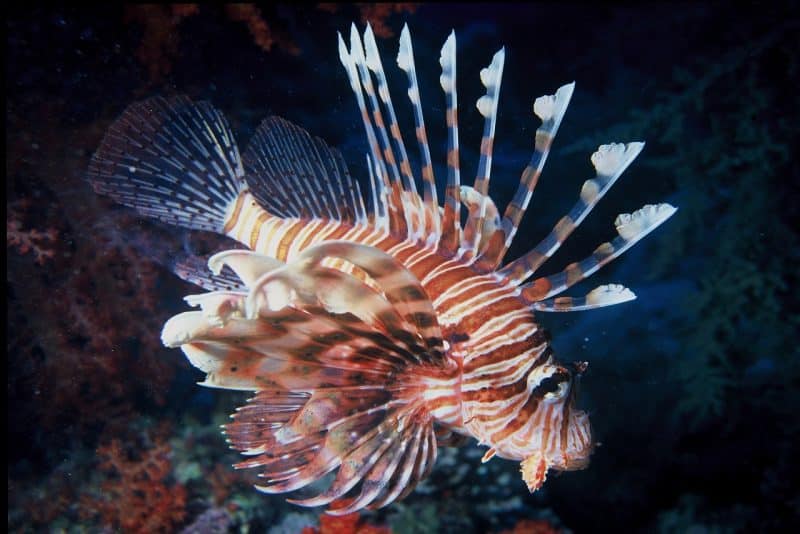
These are found in Indo-Pacific water regions and, all the more as of late, the Atlantic locale. Lionfish are very venomous and have incredibly pompous pectoral balances and poisonous spines. Their toxic substance is famous to the point that not many hunters will dare take on a lionfish.
To people, these stings are incredibly agonizing and cause sickness along with the problem in breathing. Lionfish are found in, for the most part, all marine environment types found in warm marine waters of the jungles.
Lionfish have been found in water profundities from 1 to 300 feet on the hard base, mangroves, sea grass, coral, and artificial reefs (like wrecks). Lionfish are believed to be night-time trackers, yet they have been found with full stomachs during the day in the Atlantic.
They move about by leisurely undulating the light beams of the dorsal and butt-centric blades. During the day, they now and again retreat to edges and fissures among the stones and corals. In the Atlantic, lionfish are frequently seen moving about during the day, alone and in little gatherings.
The scope of the lionfish covers an exceptionally massive region from Western Australia and Malaysia east to French Polynesia and the Assembled Realm’s Pitcairn Islands, north to southern Japan and southern Korea and south to Master Howe Island off the east shoreline of Australia and the Kermadec Islands of New Zealand. In the middle, the species is found all through Micronesia.
#9 Reef Stonefish
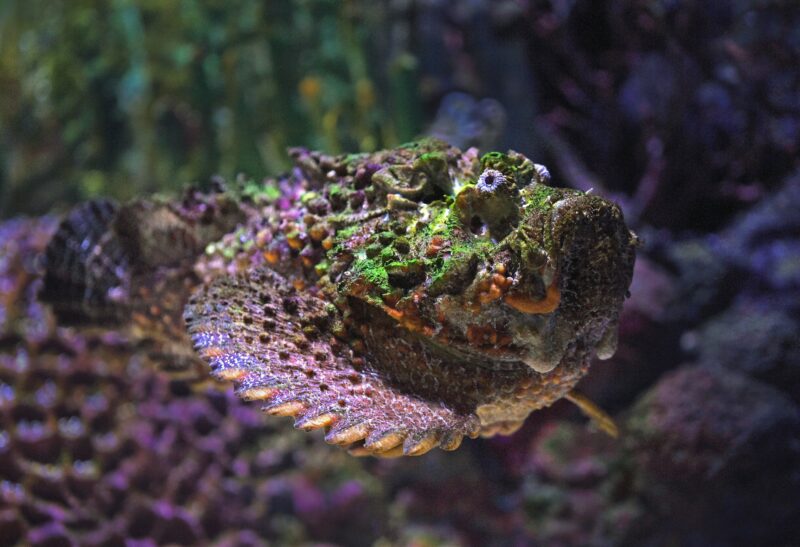
These are found in the Pacific and Indian Oceans, Shallow tropical waters, and coral reefs regions. Reef Stonefish is known as one of the most venomous fish found on earth. Reef Stonefish is especially perilous for three reasons. They have 13 sharp needles-like spines and are very harmful, organized on their back area. They mix into the encompassing landscape impeccably till somebody puts step on them.
Their poison is as yet poisonous ashore for as long as 24 hours. Thus, they represent a severe risk when they are out of the water. Its toxin is risky and very difficult. Jumpers that have encountered it depicts the aggravation as – incredible. There are accounts of casualties asking for the impacted body appendage that a stonefish stings cut off.
The eventual outcomes of these fish stings will lay out through the body and majorly effects the kidneys.
And surprisingly, after recuperation, the casualty will feel tormented for a long time. Reef Stonefish sting can cause respiratory loss of motion and could advance to cardiovascular breakdown. The Stonefish neutralizer is the second most generally regulated one found in Australia.
#10 Pufferfish
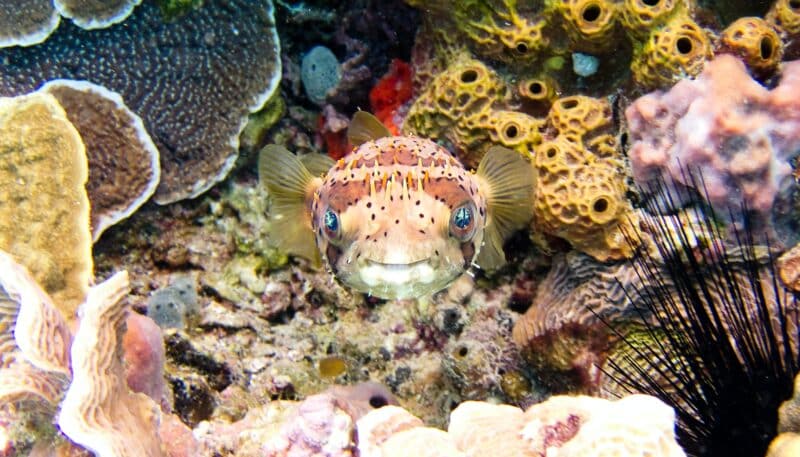
Pufferfish are found in warm waters of the Indian, Pacific, and Atlantic Oceans. A few animal varieties live in new/saline water. The pufferfish is noxious to the point that it’s appraised as the second most toxic animal found on earth. Approximately there are around 120 types of these fishes found on the planet and sadly, most are perilous, so keeping away from them ideal.
Truth is told, perilous would be putting it mildly for this animal. Their toxin has tetrodotoxin, which is multiple times more dangerous than cyanide.
This toxin substance is found in the eyes, liver, kidneys, ovaries, and spikes of these fishes. No counteracting for puffer fish poison, and they will kill a grown-up human in a fraction of a second or minute. When they find any danger, they will take the shape of a ball, and their body will grow like a ball.
Shockingly, their meat, however incredibly harmful but is viewed as grace in some parts of Japan, Korea, and China. Be that as it may, it is served by uniquely prepared gourmet experts.
Summary top 10 Dangerous Water Animals
Over 70% of the World’s surface is covered by water, most of which comes from our seas and oceans. The Pacific Sea covers over 33% of the planet’s surface. More than 1,000,000 unique types of animals call the sea their home, while researchers gauge there are 9 million additional species that are yet to be found.
The sea can be a precarious spot to live in, and that is because probably the most lethal of animals live there. From the noxious to the simple through and through horrendous, here’s a glance at ten of the most dangerous animals you might experience in the sea.
If you enjoyed reading about the above, check out the top 10 deadly Australian animals and top 10 most poisonous animals in the world next!
- Animals and Wildlife in Colorado - April 24, 2024
- Best Places to see Sloths - April 24, 2024
- Where to See Alligators in the Wild - April 24, 2024

